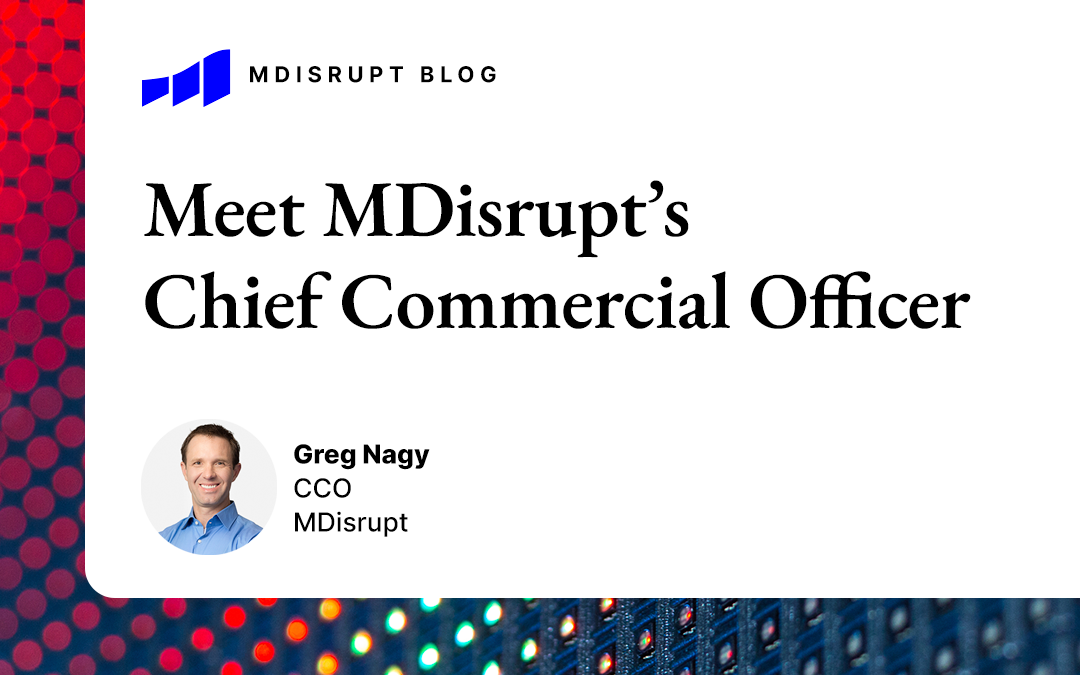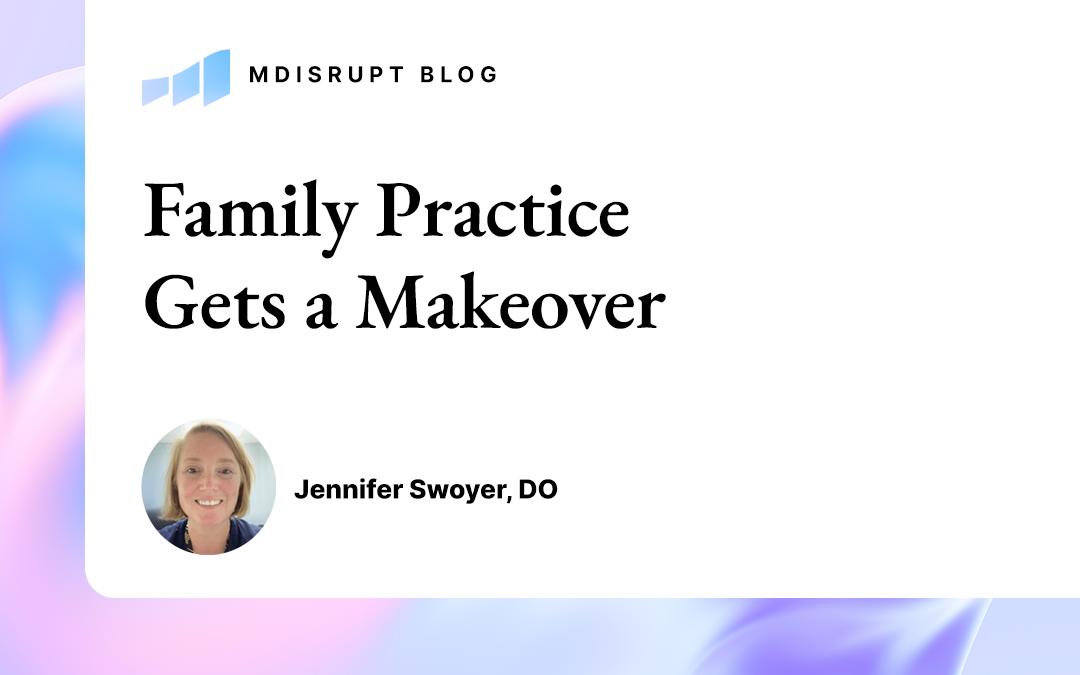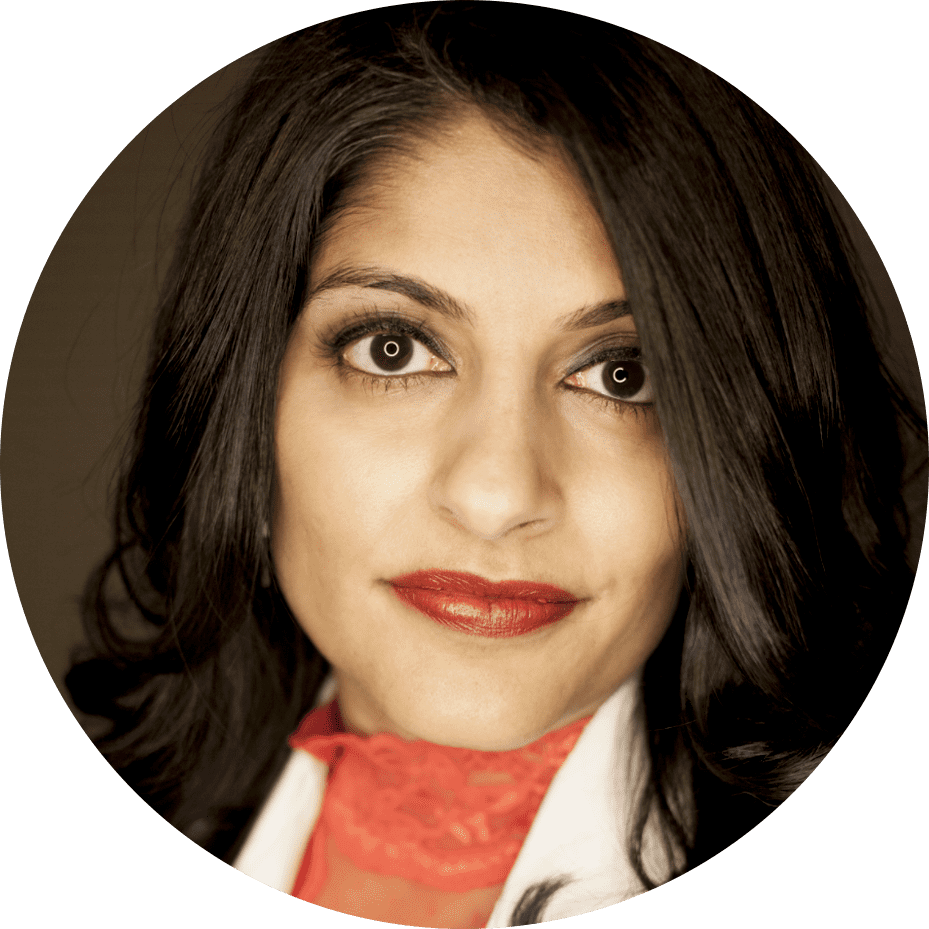
MDisrupt’s Chief Commercial Officer on Building & Innovation

Greg Nagy is a seasoned global executive in life science and medical technology, with expertise in go-to-market strategies. Previously, Greg was chief marketing officer at Drawbridge Health and VP of global marketing at Topcon Eyecare, and has held leadership positions at other biotech and medical device companies, including Solta Medical and Amgen. Here, he talks about his path from engineer to healthcare technology commercial expert and what it takes to thrive in a startup.
.
Healthcare from the inside out
MDisrupt: What led to your interest in healthcare?
Greg Nagy: Just a pure fascination with the human body, and a genuine interest in helping people.
When I was just a teenager, I got hit by a car while I was walking to the bus stop. I was thrown about 50 feet from the impact and had a major concussion, a fractured hip, fractured shins, and severely injured my knee.
I went to an all-boys Jesuit high school, and our motto was “Men for others.” When the accident happened, it was a lesson in experiencing a traumatic event surrounded by others who lived by that motto and really wanted to help.
Having your life flash before your eyes, your perspective really changes. It makes you value your healthcare support system, and is a reminder that anything can happen at any time to make you or your loved ones the “patient.” That’s part of why I chose healthcare—it’s personally fulfilling and I feel like I can make a real impact on improving people’s quality of life.
Building right, from the beginning
MDisrupt: You call yourself a “recovering engineer.” What brought you to engineering and then into marketing and commercialization?
Greg Nagy: I was always interested in science and medicine. When I started college at UC San Diego, they had recently established their program in bioengineering. I found it fascinating to apply engineering tools to clinical applications in biology and medicine. This led me to an opportunity to develop drug discovery automation for a company that was acquired by Vertex Pharmaceuticals, and later a very large-scale global drug discovery operation for Amgen.
After completing my MBA, two things stood out: I really wanted to be a “builder,” which is easier at small companies, where you can build and scale products from the beginning. And I was drawn to the commercial side, because there is a whole lot of strategy involved in bringing healthcare products to market.
I discovered along the way that there were a lot of products that were fantastic, but never made it in the market. And a lot of terrible products made so much money. The difference was about how they entered the market. I wanted to be part of that downstream success story, so I transitioned from engineering into product management. That allowed me to get my feet wet on the commercial side, but still be upstream in product development and connected with the engineers. To be effective commercially, it’s super-impactful to be able to talk to scientists and technologists in their own language.
MDisrupt: What do you like about being part of a startup?
Greg Nagy: I’m a builder. To me, that’s the most exciting thing—building in a place where there’s a lot of freedom. Some structure is needed, but you’ve got a blank sheet of paper. I’m enticed by that.
At a startup, it’s like there’s a fire behind you—if you slow down you’ll get burned. You don’t experience that in bigger companies because you’re comfortable and there are lots of resources and established processes. And I thrive in that uncomfortable position. It makes me get up every day and have to think hard and strategically about how we do the next thing.
Bringing innovation where it’s needed
MDisrupt: What attracted you to MDisrupt in particular?
Greg Nagy: I met MDisrupt’s Founder and CEO, Ruby [Gadelrab], when hiring her for a branding project at my previous company, Drawbridge Health. I was super-impressed with the people she surrounded herself with, and by the phenomenal respect for her in the industry. When she said, “Can you help me build MDisrupt?” it was an easy decision to say yes. The fact that there was already a great team in place, with some resources and market traction, was appealing too. I saw this as a chance to make a profound impact in an industry that really needs change.
MDisrupt: Is there anything you’ve learned since coming to MDisrupt that’s surprised you?
Greg Nagy: I didn’t realize how many folks want to engage in innovation, but just don’t know how to get involved. Despite what you read about doctors being overworked, I don’t think it’s the overworking that bothers them. I commonly hear that they would love the opportunity to be more involved with innovation—not just using products, but guiding their clinical development. We can help them get involved and help them contribute upstream of patient care. And being here gives me a perspective on how much opportunity there is in the digital health market.
Digital health is absolutely exploding right now—record amounts of funding, large IPOs, and an increase in M&A activity. Most importantly, tons of breakthrough healthcare innovations are coming to doctors and their patients to improve quality of life. It is an exciting time for MDisrupt: We have the opportunity to make a real impact, working with some of the brightest minds in healthcare to bring life-changing digital health products to market and ensuring that clinicians and patients have the information they need to choose the best products that are the right ones for them.
Making a difference
MDisrupt: How do you see the role of marketing and commercialization in digital health startups?
Greg Nagy: I think it’s got a tremendous role. Successful companies understand how to get the product to market and to the masses efficiently. It requires a delicate balance to get to commercial scale while preserving precious capital. Quite literally, it’s a race against the clock.
The more we can speak the language of both sides—science/technology and commercial—the more great technologies we can help bring to market. To me, that’s where we can add the most value. There are hundreds of digital health companies starting every month. How do we make sure they actually make a difference for people? I think there’s been a lot of missed opportunity for humankind, because a lot of products get shelved.
MDisrupt: Co-workers say they appreciate your calmness. What helps you be that calm guy?
Greg Nagy: I’m always surprised to hear that. I think I’m more like a duck—looks calm on the surface, but paddling really hard underneath.
In startups, there are always lots of ideas and changing priorities. You have to be that person who steers straight down the middle: “This guy is not overreacting and he’s confident about what he’s doing.” I think that confidence is important to feel and to project. By tuning into the challenges people at some of these digital health companies are dealing with, I can show them confidence very quickly out of the gate.
Dog joy
MDisrupt: One last question—why’d you get your dog?
Greg Nagy: The dog got me! I’m a “foster fail.” Frida, a Great Dane named after artist Frida Kahlo, was adopted from a rescue group in Southern California. After just a few weeks of fostering, we fell in love with her and she is now part of the family. I didn’t want a dog—didn’t want to give up my freedom—but now we take her everywhere. You forget about everything else when you’re throwing the ball for your dog. It brings so much joy to everyday life.
At MDisrupt we believe that the most impactful health products should make it to market quickly. We help make this happen by connecting digital health innovators to the healthcare industry experts and scientists they need to responsibly accelerate product development, commercialization, adoption, and scale.
Our expert consultants span the healthcare continuum and can assist with all stages of health product development. This includes regulatory, clinical studies and evidence generation, payor strategies, commercialization, and channel strategies. If you are building a health product, talk to us.





